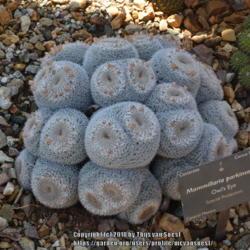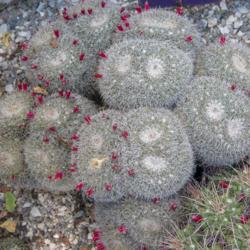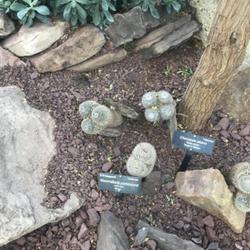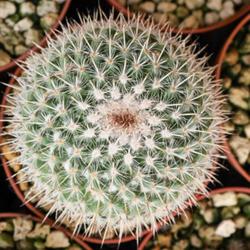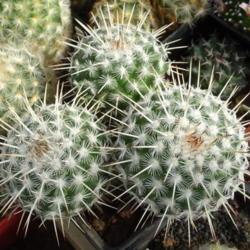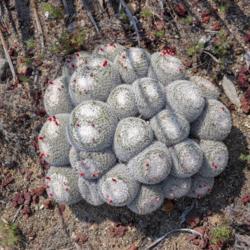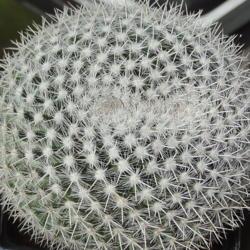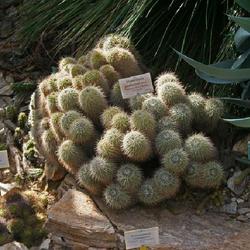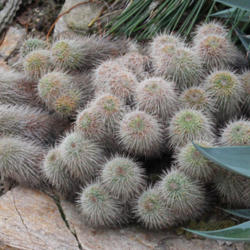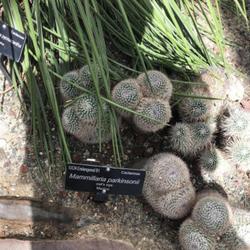Posted by
Baja_Costero (Baja California - Zone 11b) on Mar 3, 2022 8:33 PM concerning plant:
Dichotomously branching Mammillaria with blue-green stems, abundant white wool and spines, pale yellow flowers, and reddish orange fruit. Individual stems may grow to 6 inches tall, 4-6 inches in diameter. Clumps may reach a few times that size. 2-5 stiff central spines, the upper ones much shorter than the lower ones; 30+ radial spines.
From Querétaro, Mexico. Old, multiheaded specimens can be spectacular. The overall appearance of the plant is white, due to the spines, bristles and wool. The overall appearance and especially the spines can be quite variable. The long lower central spines may make it difficult to handle and repot. As with any plant that has this much wool and spines, strong light is very important in cultivation.
This is one of a few Mammillarias which branch dichotomously, by division of the growth center, and one of its common names relates to its appearance right after division. Other plants in this group include muehlenpfordtii and nejapensis.



